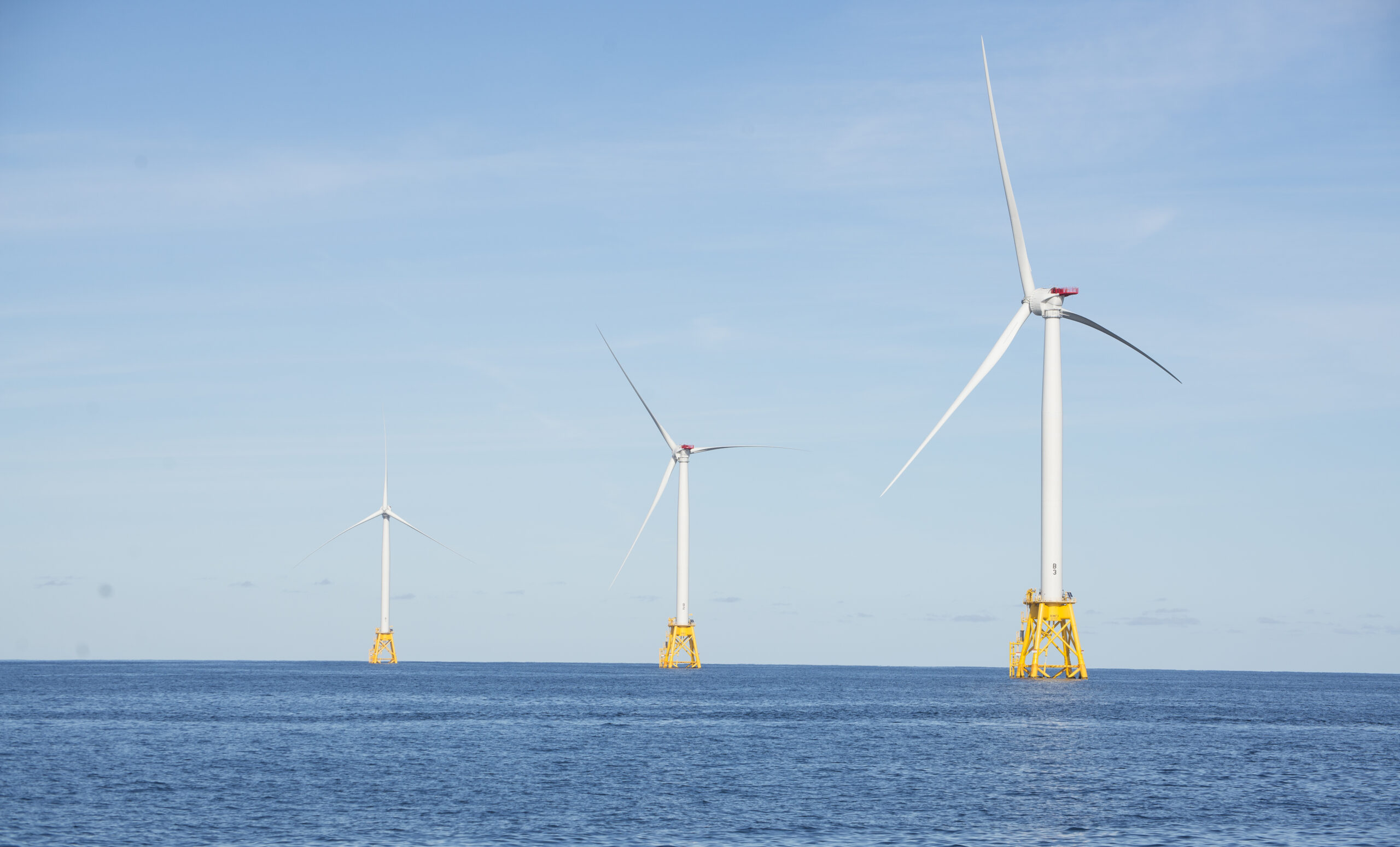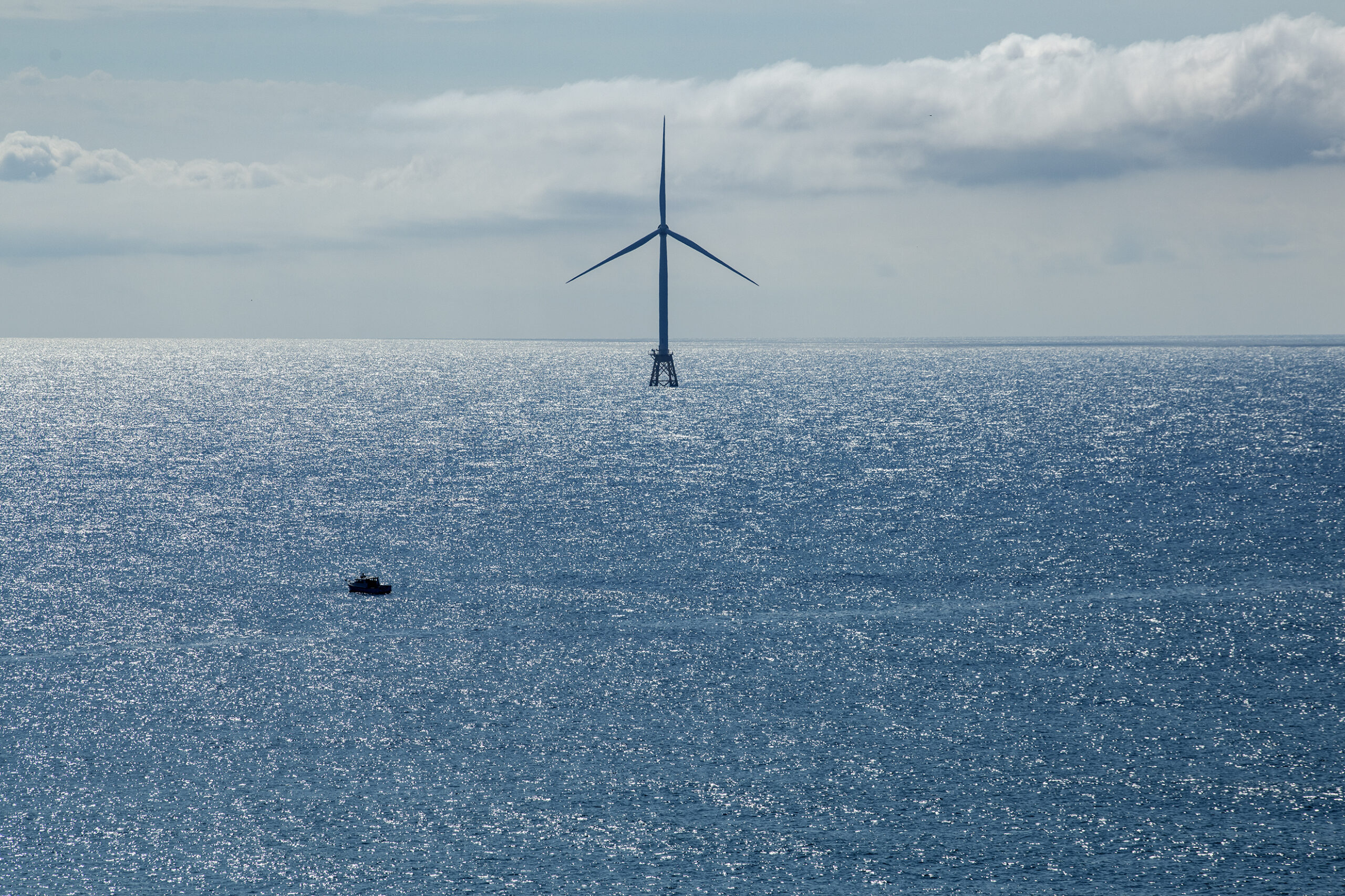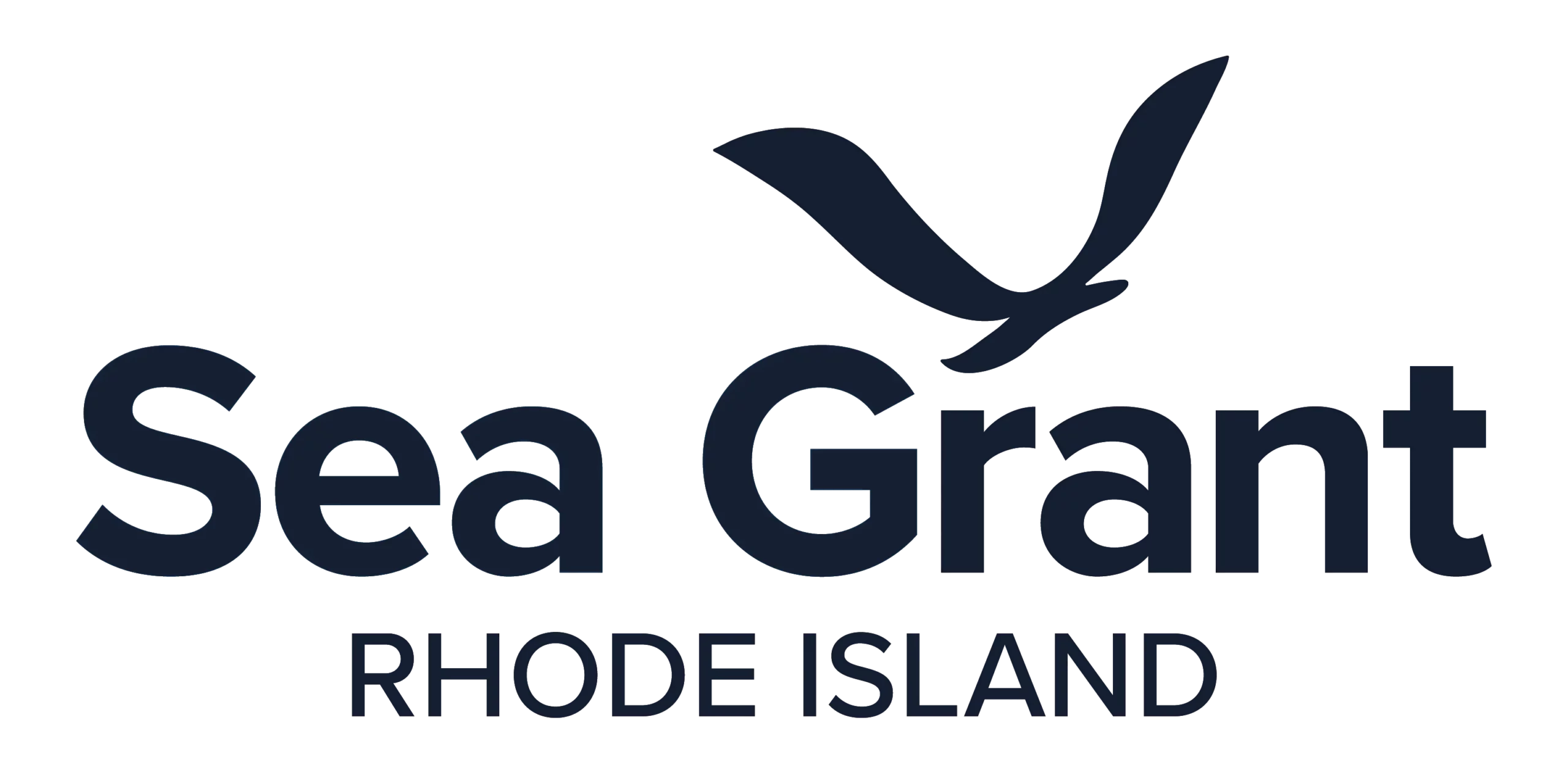Recent legal research examines the various compensation programs offered by offshore wind developers to communities in southern New England.
As offshore wind farms are developed along the East Coast and even more are proposed, communities may want to understand the different compensation funds the wind farm developers are agreeing to establish as part of their negotiations with states. That was the idea behind recent legal research by Rhode Island Sea Grant Research Attorney Ryan McCrorey, at the behest of Connecticut Sea Grant, to examine the various compensation programs offered by Vineyard Wind, Southfork, Revolution Wind, and others to communities in Rhode Island, Massachusetts, and Connecticut.

Three turbines in the Block Island wind farm in Rhode Island. As much larger offshore wind farms are developed off the East Coast, companies are establishing compensation funds as part of their negotiations with coastal communities.
Some of the foremost concerns about offshore wind development are its impacts on the fishing industry. Fishers are concerned that offshore turbines will displace them from their fishing grounds, damage fish habitat, and directly harm the fish themselves, reducing their numbers.
While the Bureau of Ocean Energy Management is the primary agency overseeing the federal leasing for offshore wind farms, many entities are part of the approval process, including state governments, through federal consistency, which requires that federal government decisions that impact states align with federally approved state management plans. States cannot require that a developer include compensation as part of their proposal, but a state and a developer may agree to some level of compensation as a way for the developer to achieve consistency.
A single developer may create multiple funds to serve different purposes—there may be direct compensation to fishers for a loss of access or reduced harvests, general support for fishing communities, funding for navigation equipment, training or professional development, or funding for research studies. There is a separate process for list or damaged gear claims. These funds are held in escrow or trust and are administered by a third party.
There are a few mechanisms to ensure the developers actually set up the funds they promise in their plans. On the federal side, BOEM approves and sets conditions for construction and operations plans, and the Bureau of Safety and Environmental Enforcement enforces the terms and conditions of those plans. On the state side, states may, through the Coastal Zone Management Act, contact the federal government and request remedial action, or they may use contract law to pursue a claim.
There are efforts to streamline this process, including a proposal for states to create a regional fund administrator. Vineyard Wind is the first company to launch its compensation fund. Fishers have until June 3, 2024, to apply to the fund. They must demonstrate that they have been fishing in the area for at least three years between 2016 and 2022.
More information is available in the research paper from this project, which is posted on the Marine Affairs Institute website, along with related papers and other research by Research Attorneys and Rhode Island Sea Grant Law Fellows.

A boat passes a Block Island wind farm turbine. Fishers are concerned that offshore turbines will displace them from their fishing grounds, damage fish habitat, and reduce fish numbers.
